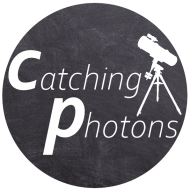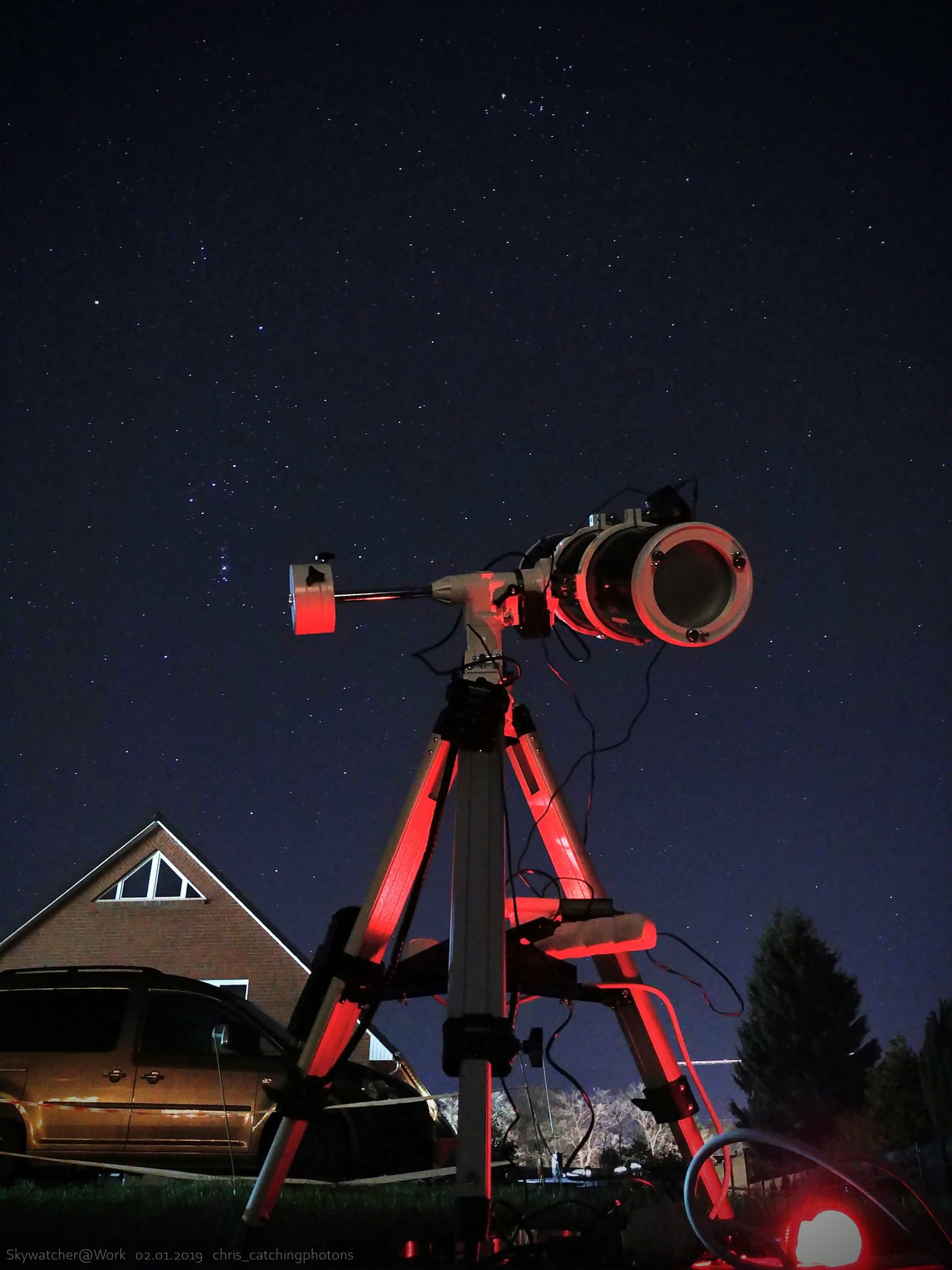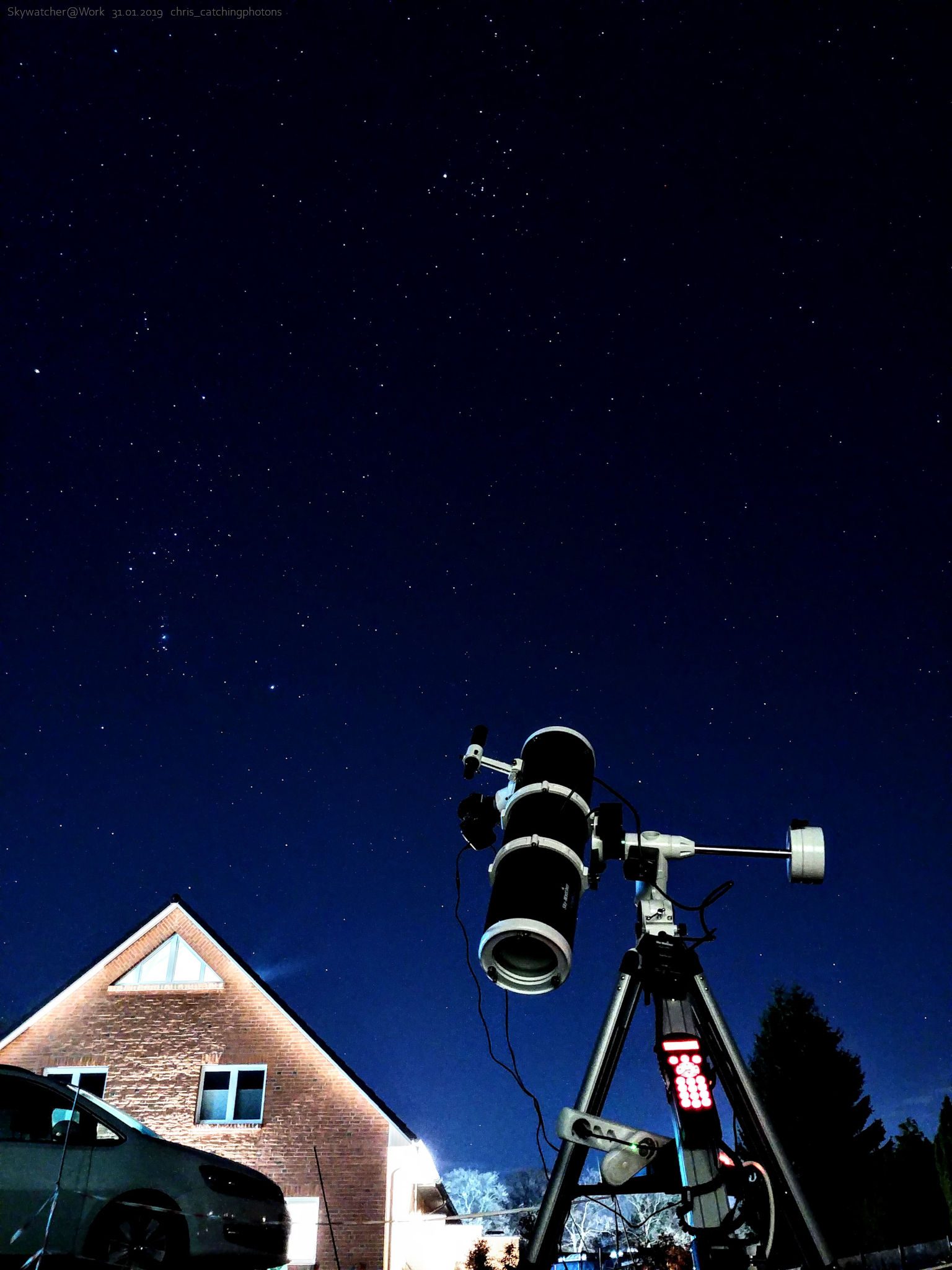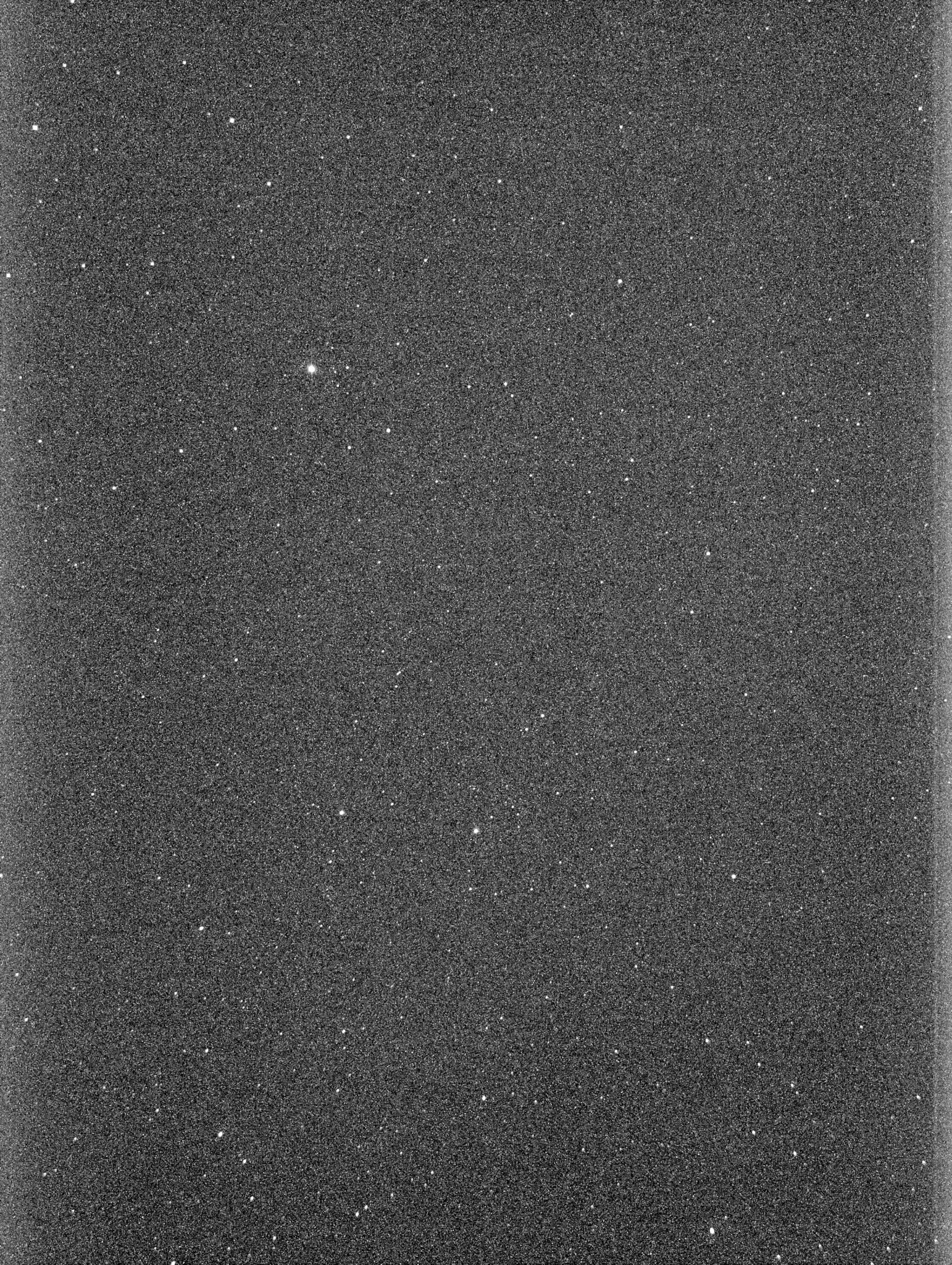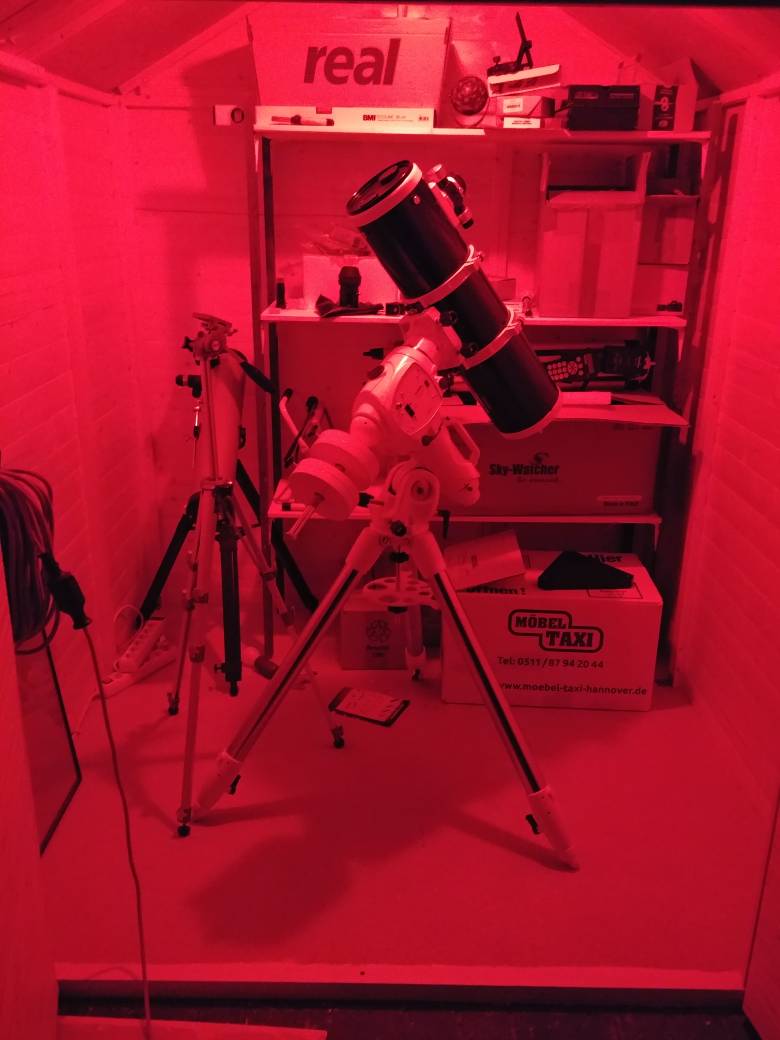Why is a good mount important? –
23.06.2020
Hey folks,
so finally everything arrived. My old rig was quite overwhelmed with my ambitions and had to be replaced. Why so?
– First reason was the old mount. The mount is undoubtedly the most important part of your equipment. No fancy OTA will produce sweet DSO images without a proper tracking mount. And “proper” means: The mount must be able to carry the optics with ease.
My old Skywatcher EQ3-Pro mount is a great motor driven and ASCOM able german-equatorial GOTO mount. Thereby it has all the features you would ask from a mount. It can track the night sky, I can direct it from a Laptop using advanced planetarium software (CdC or Stellarium) and I can find objects in the night sky by using the internal catalogue. Everything is very cool.
Problem is the weight capacity.
With everything attached: Optical tube, guide-scope, guide-cam, main camera, filter, … the mounts counter weights were easily all the way down. That meant the mount was on its maximum weight limit.
And you would feel that limit whenever you use the mount: Aligning was a pain, inaccuracies building up over time, tracking was a pain, with backlash in the gear growing each session, vibrations were a pain, ruining half of the guided 2’ subs. Everything was just VERY complicated with a mount on its max.
– Second thing was the old camera. The old Olympus E510 DSLR my brother lent me was an easy entrance to the world of Deep Sky imaging (thanks bro!). Unfortunately the sensor of the cam had seen better days. With increasing usage time the noise level of the sensor grew overwhelmingly big! At a certain level some channels of the sensor (red) wouldn’t catch up any signal at all. That left me with colour in-balanced images of faint nebula – a pain to process.
Anyway: the noise level of that old chip (2007?) was quite a challenge every time I used this cam.
And even more annoying: A) The camera couldn’t be connected to any astro imaging software due to Olympus strict policy of driver control – and B)
The camera was not/ is not astro modified. I will devote another full review of astro modification but in short:
Astro modification is the removal of an internal filter component inside the camera. Thereby the white balance is screwed but the camera is able to pic up significantly (!) more red light from deep space target. As mayor elements of nebula emit light in this spectrum, this modification of DSLRs can’t be emphasised heigh enough!
So… and in order to be able to continue this road I decided it is time to switch to a new rig:
This will include:
– Camera: Canon EOS 700Da
– Mount: SW EQ6R Pro
– Guidecam: Omegon Microspeed Guidescope 50mm
– Guidecam: ZWO ASI 120mini-mono
– OTA: Skywatcher Telescope N 150/750 PDS Explorer
– Filter: Omegon Light Pollution Filter 2″
– Software: APT, PHD2, DeepSkyStacker, Cartes du Ciel, AstroTortilla
– Processing: GIMP2
And finally – in the last few days and weeks – every new component arrived and I had the chance to assemble everything together and give it a go. I aimed for the “M27 Dumbbell Nebula” as this was an earlier target I was especially unhappy with (NO signal in red).
Unfortunately this time of the year (06.2020) it is by FAR the most unpleasant time to test a new rig. Darkness (at best) from 00:00am to 02:30am and temperatures above 20°C (sensor noise is positively related to temperature!) make this trial a bit complicated. Whatever!!
So this is my assembled rig inside the new shed:
The deal was like this:
Level and balance: no problem!
First initial plate solving: Quite a bit of a huddle. I accidentally swapped E and N coordinates within the EQMOD driver and so the scope was always pointing in the wrong direction. As AstroTortilla saw the misery and wanted to sync the scope with the true coordinates – those were so way off that EQMOD refused to take them as “true” and stayed with the wrong internal orientation. But was easy solved by switching the coordinates inside the driver back into the right place. Puew! But I lost a quarter of an hour there!
Pointing accuracy: No comparison to the old EQ3! Swuush and there you are! AstroTortilla won’t have much to do left…
Noise level: While slewing at top speed the mount is easily loud enough for the sound to be picked up by neighbours. But in tracking/guiding modus there is just silence! No “bzzz… brrr…bwww…bzzz…” like with the EQ3. Just silence.
Polar alignment: What an ease with the build in illuminated polar scope reticule! And the big haptical knobs help as well!
Imaging M27: I found M27 after the initial problems without any problems. I choose ISO800 (because why not?) and 120sec subs. The light frame length was limited by the still not quite dark sky. Longer subs would overexpose the images and flatten out the signal, too much. So I ended up taking a short series of 2min subs with my “brand new” astro modded Canon EOS 700Da.
I was using APT (Astro Photograpy Tool) for the first time. It connected with the Canon like a charm and worked very intuitive without any problems.
My new imaging Laptop switched into hibernation modus after the first half of an hour – I needed to disable that feature. But apart from that everything worked just fine.
The first light frames coming in: I was amazed! The colours of M27 were clearly visible within a single light frame! Just great! The reddish outer gas layers and the bluish inner clouds! Just spectacular! And no comparison with the old image of M27 I took!
Processing: I definitely (!!) need some processing skills again! I stretched the standard curves – levelled background colours – enhanced the blue gas inside and the red surrounding gas of M27 – levelled the colours of the star field around and.. that was it. Here is the final result:
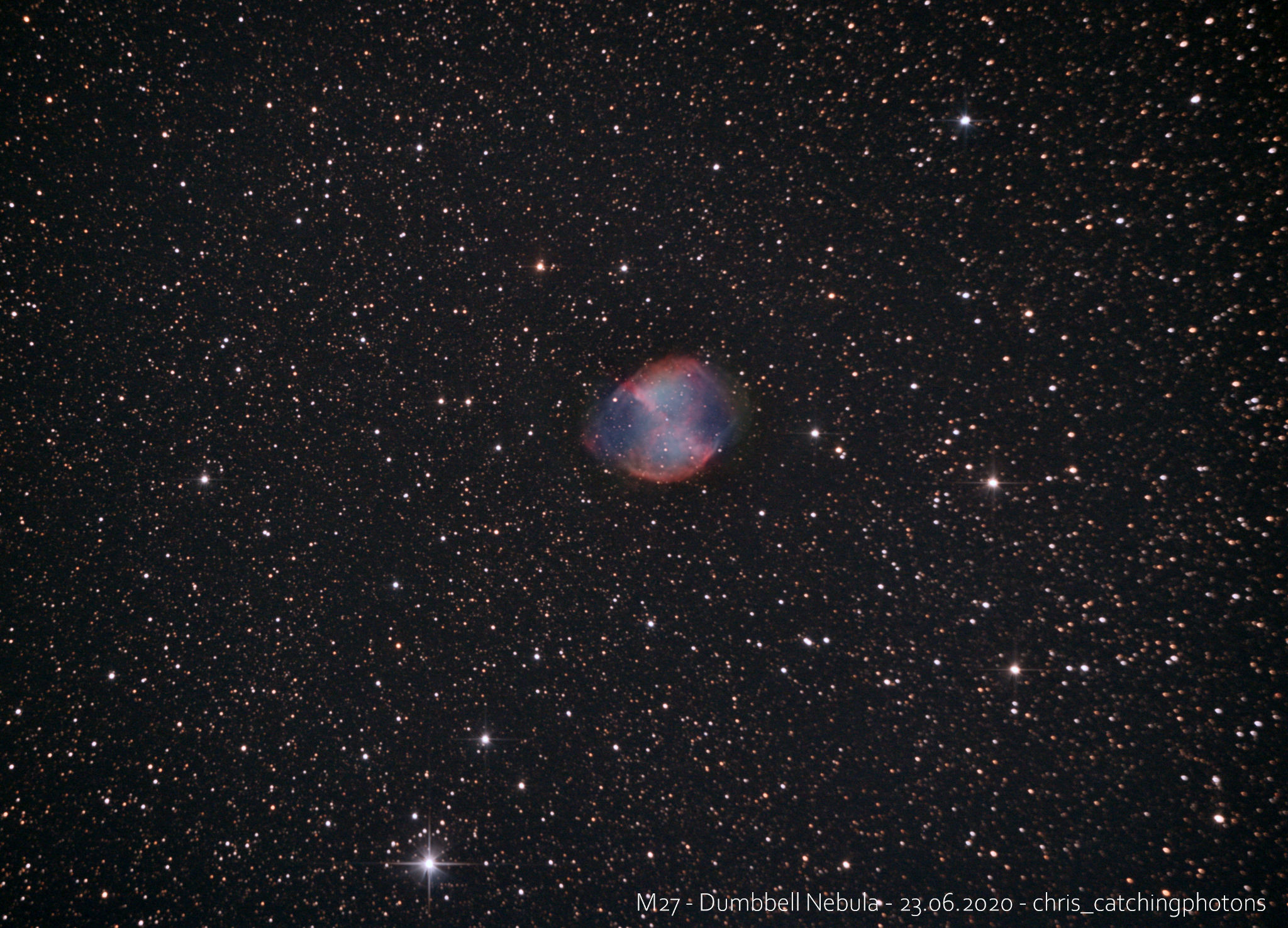
Compare this with the first attempt I did nearly one year ago:
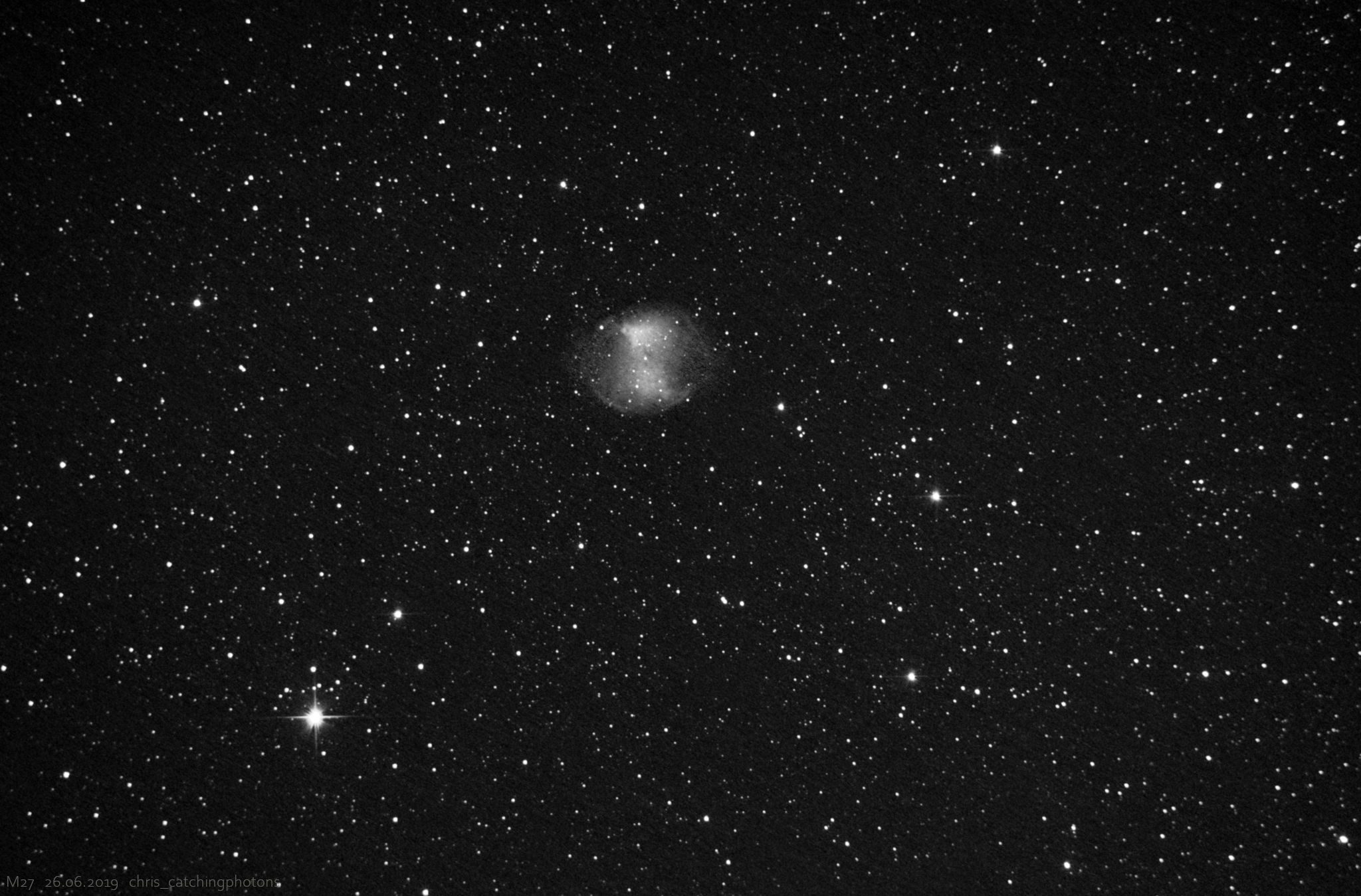
I love my new rig! When the nights will get longer there will be so much more to see! I am really looking forward to setting up again!
Greetings and clear skies!
Chris
